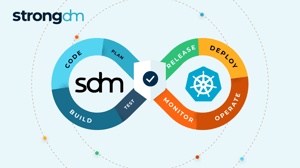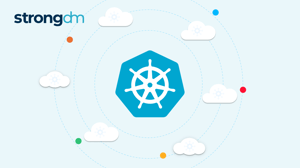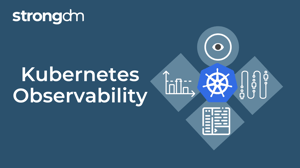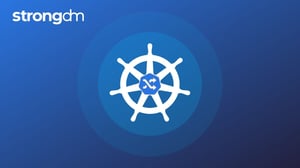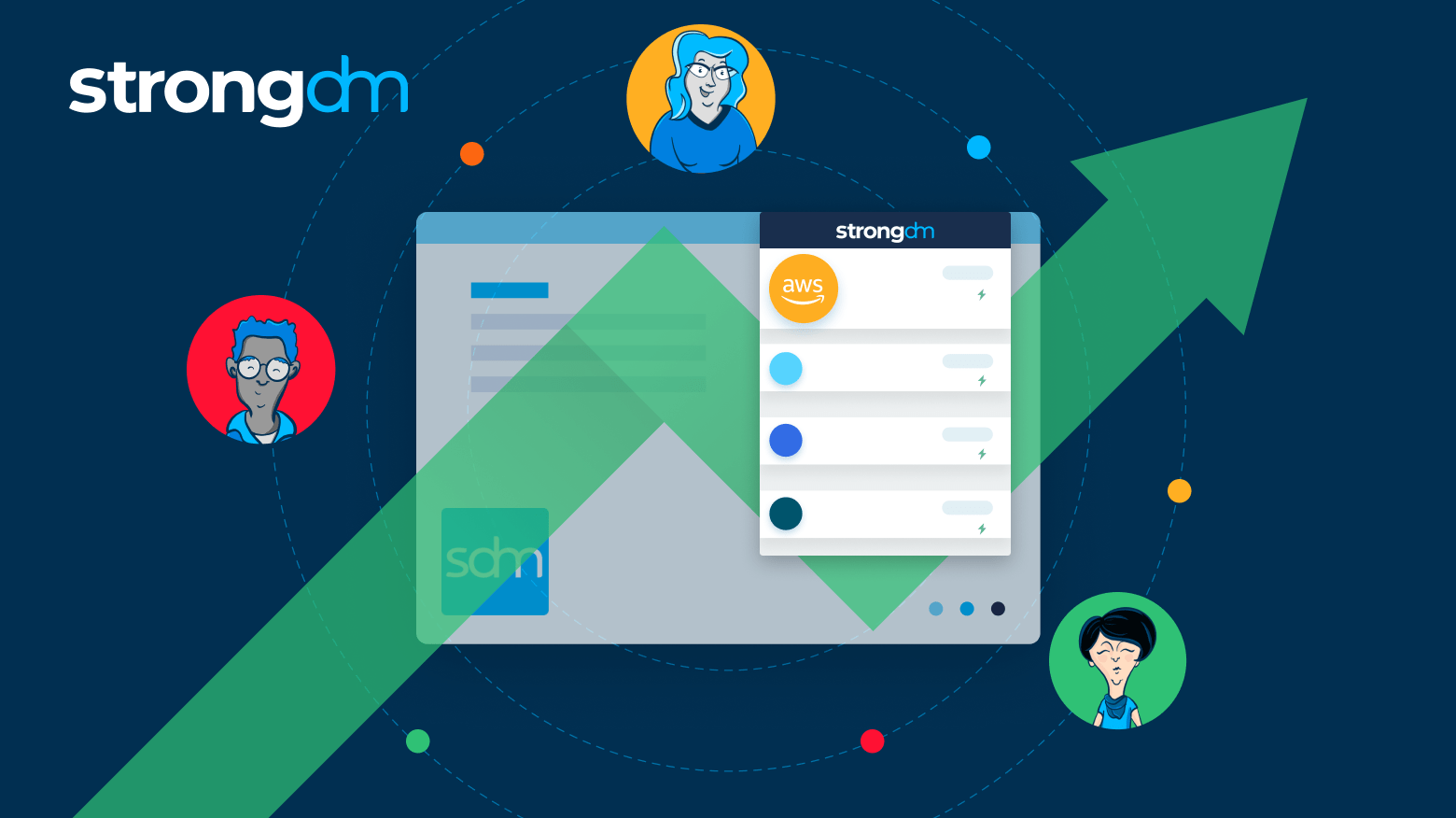

Written by
Schuyler BrownLast updated on:
December 22, 2023Reading time:
Contents
Built for Security. Loved by Devs.
- Free Trial — No Credit Card Needed
- Full Access to All Features
- Trusted by the Fortune 100, early startups, and everyone in between
TL;DR: Secure access controls must be applied universally and consistently across all your infrastructure—from the Linux boxes in your datacenter to your Kubernetes clusters in AWS. StrongDM Dynamic Access Management (DAM) is uniquely positioned to provide seamless, secure access across your entire stack, simplifying access management and compliance for your legacy systems and modern stack no matter if they are in the cloud or on-prem.
Kubernetes is the go-to container orchestration platform for over 60 percent of organizations. While AWS streamlines the process of deploying and maintaining the underlying infrastructure, running Kubernetes still comes with its fair share of challenges. You have to navigate intricate configurations and integrations, and stay up-to-date with the frequent feature releases—which often call for compatibility checks and cluster upgrades.
When it comes to managing access to Kubernetes clusters, it often falls outside of standard access processes because traditional tools can't support them. However, you can opt for a dynamic access management tool like StrongDM to simplify the process of managing Kubernetes on AWS. StrongDM streamlines administration, centralizes access control, and boosts security.
Understanding Kubernetes on AWS
By running Kubernetes on AWS, you can focus more on application development instead of getting caught up in the intricacies of the underlying infrastructure. Your Kubernetes clusters can be configured to dynamically scale resources to match changes in workload demands.
Plus, you have the option of distributing your clusters across various physical locations through AWS Availability Zones and Regions. By doing so, you can minimize downtime and achieve high availability.
Amazon Elastic Kubernetes Service (EKS) makes all of this possible by abstracting infrastructure management, simplifying cluster management, and updating automation and integrations with AWS services.
Some of these AWS services include:
- Amazon Elastic Compute Cloud (EC2): Provides the underlying compute instances for Kubernetes worker nodes, allowing containerized workloads to run on scalable and flexible resources.
- Amazon Virtual Private Cloud (VPC): Creates a logically isolated network environment for Kubernetes clusters, enabling secure communication and control over network configurations.
- AWS Identity and Access Management (IAM): Offers fine-grained access control for Kubernetes resources, allowing administrators to define and manage user permissions.
These components work together to streamline the deployment and management of Kubernetes on AWS, but there are still complexities involved. Setting up and maintaining a Kubernetes cluster on AWS requires various component configurations, secure network connections, and AWS services integrations.
The Challenges of Kubernetes Management
To properly set up a Kubernetes cluster, you need to have a solid grasp of containerization, networking, security, and cloud platform configurations. Once your Kubernetes cluster is deployed, it’s crucial to consistently monitor, optimize, and fine-tune it to ensure high availability, scalability, and efficiency. Ongoing maintenance is key to keeping your cluster running at its best.
When it comes to configuring access controls, you will need explore options to your legacy privileged access management (PAM). This is because legacy PAMs lack native integration with cloud platforms, which limits their ability to interact with the underlying infrastructure and effectively manage compute resources and clusters.
Additionally, securing your Kubernetes environment requires robust access controls—including authentication mechanisms, role-based access control (RBAC), and network policies. These measures work together to prevent unauthorized access, safeguard sensitive data, and mitigate potential security threats.
Auditing and monitoring Kubernetes resources can be challenging because containerized workloads are distributed across multiple nodes within a cluster, making it difficult to capture and analyze the metrics needed to gain insights into your Kubernetes environment. Integrating and correlating Kubernetes-specific monitoring data with the monitoring services offered by cloud platforms further complicates this issue.
Another challenge is figuring out what caused an incident and who is responsible for it. Because often, by the time you discover the incident, the cluster is already gone.
Introducing StrongDM
StrongDM is a centralized access management solution that simplifies the authentication, authorization, and auditing processes for your databases, servers, and Kubernetes clusters. It provides centralized access management on AWS by acting as a secure proxy layer, giving you granular control over user access, and streamlining permission management.
By using StrongDM, you can achieve:
- Centralized access control: StrongDM enables centralized access control for your Kubernetes clusters, allowing you to enforce granular user permissions and reduce the risk of unauthorized access.
- Enhanced security: With StrongDM, you can enhance security by implementing strong authentication, multi-factor authentication, and detailed audit logs for your Kubernetes deployments on AWS.
- Simplified administration: StrongDM streamlines administration with its user-friendly interface, eliminating the need for manual configurations while simplifying user management tasks.
- Compliance and auditing: StrongDM helps you meet compliance requirements by maintaining comprehensive audit trails, access logs, and compliance reports.
- Integration with AWS: StrongDM seamlessly integrates with AWS services, providing centralized access management for your Kubernetes clusters and other AWS resources.
Simplifying Kubernetes Management with StrongDM
With StrongDM, you can streamline access control management for your Kubernetes clusters. StrongDM centralizes the enforcement of access policies, allowing you to enforce user controls across multiple clusters and environments with its granular permissions and RBAC. This enhances the security of your Kubernetes clusters, while robust authentication measures—like multi-factor authentication and certificate-based access—effectively reduce the risk of data breaches.
Centralized authorization also simplifies user management. Providing a single point of control reduces administrative overhead and ensures consistent access policies across all your systems. It also simplifies the process of demonstrating regulatory compliance and meeting security requirements.
StrongDM’s intuitive and user-friendly interface makes it easy for users to navigate. Its user-centric design and straightforward navigation simplify the management of Kubernetes resources on AWS.
Moreover, you can easily use tools like Terraform and the SDK while working on your Kubernetes clusters. StrongDM seamlessly integrates with your existing workflows, ensuring uninterrupted development and deployment processes.
Strengthening Security and Compliance
StrongDM enhances security by allowing you to define specific permissions and restrictions for individual users or groups. This restricts resource access to authorized individuals, reducing the attack surface.
Moreover, you gain visibility into resource access and modifications through detailed audit logs of user activities. StrongDM seamlessly integrates with AWS monitoring and logging tools, enabling you to centralize and analyze Kubernetes-specific audit data alongside other AWS monitoring data.
By supporting your entire tech stack from legacy infrastructure to Kubernetes running in the cloud, StrongDM helps you gain complete visibility and control of access to all your technical resources.
With StrongDM, you can also manage access dynamically—just like the Kubernetes clusters themselves. Its Just-in-Time (JIT) access and Zero Standing Privileges (ZSP) features allow you to grant temporary access to users when needed and minimize their privileges to reduce the risk of unauthorized access.
By simplifying access control management and providing robust auditing capabilities, StrongDM enables your organization to effectively enforce and demonstrate compliance with standards like PCI DSS, HIPAA, and GDPR.
Conclusion
Managing Kubernetes on AWS with StrongDM centralizes access control and simplifies administration while improving security. No longer will your security team be in the dark about who has access to what, and what they did. And, with StrongDM you can move to a Just-in-Time access model which ensures that there are never access grants or keys around to slip into the wrong hands. This safeguards your critical workloads and ensures seamless operations around the clock while effectively maintaining operational efficiency and mitigating cyber risks in the dynamic cloud environment.
Ready to simplify how your organization manages Kubernetes on AWS? Visit the StrongDM AWS Marketplace.
Next Steps
StrongDM unifies access management across databases, servers, clusters, and more—for IT, security, and DevOps teams.
- Learn how StrongDM works
- Book a personalized demo
- Start your free StrongDM trial

Categories:

About the Author
Schuyler Brown, Chairman of the Board, began working with startups as one of the first employees at Cross Commerce Media. Since then, he has worked at the venture capital firms DFJ Gotham and High Peaks Venture Partners. He is also the host of Founders@Fail and author of Inc.com's "Failing Forward" column, where he interviews veteran entrepreneurs about the bumps, bruises, and reality of life in the startup trenches. His leadership philosophy: be humble enough to realize you don’t know everything and curious enough to want to learn more. He holds a B.A. and M.B.A. from Columbia University. To contact Schuyler, visit him on LinkedIn.
You May Also Like

